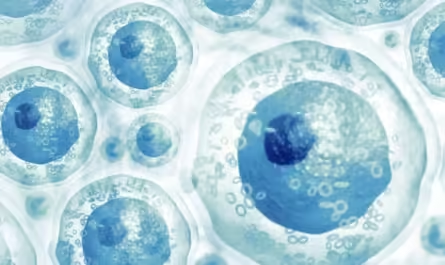In a recent study published in the journal Stem Cell Reports, researchers have shown that Familial Alzheimer’s Disease can be transferred through bone marrow transplant. The team transplanted bone marrow stem cells from mice with a hereditary form of Alzheimer’s disease into normal mice and found that the recipients developed the disease at an accelerated rate.
The findings of this study shed light on the role of amyloid, a protein linked to Alzheimer’s disease, that originates outside of the brain. This challenges the traditional view of Alzheimer’s as a disease solely produced within the brain, suggesting that it is a more systemic condition.
Senior author and immunologist Wilfred Jefferies from the University of British Columbia emphasized the importance of screening donors for Alzheimer’s disease to prevent its inadvertent transmission through blood products transfusions and cellular therapies.
The researchers transplanted bone marrow stem cells containing a mutated version of the amyloid precursor protein (APP) gene – responsible for the formation of amyloid plaques in Alzheimer’s disease – into two different strains of recipient mice. The recipients exhibited cognitive decline earlier than expected, with behavioral symptoms appearing as early as six months post-transplant.
Signs of cognitive decline in the mice included impaired memory and a lack of normal fear response. The mice also displayed molecular and cellular hallmarks of Alzheimer’s, such as a leaky blood-brain barrier and amyloid buildup in the brain.
The study demonstrated that Alzheimer’s disease can result from amyloid produced outside of the central nervous system, as the transplanted stem cells could not develop into neurons but still led to disease manifestation in the recipient mice.
The researchers plan to further investigate the transfer of Alzheimer’s disease through different transplant methods and expand their exploration into disease transmission between species.
Future studies will focus on examining if disease transmission occurs through other types of cellular therapies and exploring the potential transfer of the disease from contaminated sources. Jefferies emphasized the importance of understanding how the disease can be inadvertently transmitted through various mechanisms beyond bone marrow transplant.
This study signifies a significant advancement in our understanding of Alzheimer’s disease and highlights the need for thorough screening of donors in medical procedures involving blood products, organs, tissues, and stem cells. By unraveling the complexities of disease transmission, researchers aim to develop better control measures to prevent the spread of Alzheimer’s and other systemic conditions.
*Note:
1. Source: Coherent Market Insights, Public sources, Desk research
2. We have leveraged AI tools to mine information and compile it.


